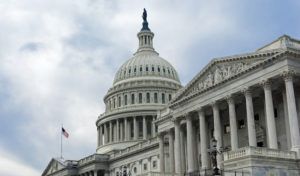
A Penn Program on Regulation seminar examines agency design.
Would the risk of the Deepwater Horizon oil spill, which released approximately 4.9 million barrels of oil into the Gulf of Mexico last year, have been reduced if the agency responsible for enforcing offshore oil and gas regulations, Minerals Management Service (MMS), not also collected oil and gas revenues from the same companies it oversaw as a regulator?
Judging from the Department of the Interior’s (DOI) decision to split up MMS into multiple agencies one month after the spill, the federal government’s answer appears to be that separating these functions would have made the accident less likely to occur. DOI Secretary Ken Salazar explained that MMS had “three distinct and conflicting missions” that “must be divided” because they impeded MMS’s ability to perform its functions including regulatory oversight.
However, at a recent seminar sponsored by the Penn Program on Regulation (PPR), Christopher Carrigan, a PPR Regulation Fellow, presented research that challenges the conventional account that MMS’s regulatory oversight suffered in large part because of an internal, organizational conflict between the agency’s regulatory and revenue management functions.
Carrigan explained that although the findings of a National Commission support the conclusion that MMS’s regulatory shortcomings contributed to the disaster, his research suggests that most commentators have overemphasized the agency’s internal conflicts to the detriment of the congressional, presidential, and public pressures that MMS faced to promote energy production.
Carrigan explained that DOI, with the support of Congress, created MMS in 1982 in response to failures by the U.S. Geological Survey (USGS) to manage its revenue collection responsibilities. USGS had decentralized its tax collection responsibilities in its regional offices, an arrangement which was alleged to have led the agency to neglect this function to support its scientific focus. As a result, MMS was created by locating two core missions of revenue collection and offshore energy management into two independent units within MMS. These two units separated the agency’s responsibilities by keeping revenue management centrally focused in Colorado and regulatory operations primarily located near the Gulf of Mexico, particularly Louisiana.
This physical separation helped to mitigate goal conflict, which is in part why Carrigan doubts the solution is to split up the agency further. Separating functions, whether in the same agency or across different ones, can affect the government’s ability to synchronize tasks effectively. The division of tasks at MMS, and other multi-purpose agencies tasked with regulatory and non-regulatory functions, creates a trade-off between efficiently coordinating tasks and achieving conflicting goals. In fact, numerous commissions and GAO reports documented the difficulties MMS was having transmitting oil and gas production data between its own offices as a result of its organizational structure.
Additionally, although MMS’s alleged “cozy” relationship with its regulated industry was widely criticized in Deepwater Horizon’s aftermath, the egregious behavior reported in the press was primarily focused on the group responsible for collecting oil and gas taxes in kind. The most disparaging DOI Inspector General reports released in the period leading up to the oil spill alleged that some MMS employees engaged in sexual relationships with industry members, attended oil and gas industry functions, and accepted a variety of gifts from industry representatives. But Carrigan argued that this improper behavior largely occurred in the agency’s revenue collection unit that was separate from its regulatory offices both geographically and functionally.
Carrigan noted that if revenue collection were subverting regulatory functions, congressional oversight likely would have indicated this problem. Yet, for years leading up to the oil disaster, congressional oversight of MMS focused on its role as a revenue collector. The agency’s regulatory functions received little critical attention from Congress throughout most of the agency’s existence. Perhaps more importantly, MMS’s internal difficulties sharing the information it acquired through its role as regulator with its tax collection group suggests to Carrigan that, if anything, regulation impeded revenue collection – not the other way around.
Furthermore, a budget imbalance that favored revenue appropriations at the expense of regulatory funding may have influenced the agency’s priorities, demonstrating that political and public policy preferences also played a role in the failure of MMS, according to Carrigan.
Carrigan’s research draws into question the conclusion that the BP oil spill was a predictable outcome of MMS’s multi-purpose organizational mission. While he does find broader evidence that U.S. federal government agencies that engage in both regulatory and non-regulatory functions perform worse on average, this may be a result of the complexities associated with balancing goal conflict with task coordination inherent to such agencies.
Overall, Carrigan expressed skepticism that dividing regulatory and revenue functions into separate agencies will do much to address the risks of another oil spill. He cautioned that policy-makers ought to think twice before prescribing remedies focusing only on goal conflict, at the expense of required coordination. Furthermore, his research suggests that multi-purpose agencies can be structured to mitigate such conflict in ways that will not always lead to the subversion of one goal over the other.



